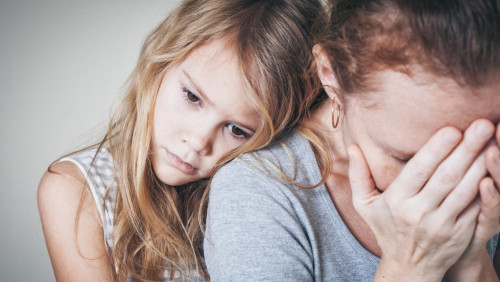English
Barnevernet under scrutiny. New report in Norway leaves no illusions

Further changes are planned in the Norwegian child welfare system. Fot. Fotolia (zdjęcie poglądowe)
A team of experts appointed by the government following last year's media findings has presented sharp criticism of the organization of Norway's child protection system. They pointed to insufficient oversight by the Ministry of Children and Families (Barne- og familiedepartementet) and the Directorate for Children, Youth and Family Affairs (Barne-, ungdoms- og familiedirektoratet). Inconsistencies also arise from a separate system operating in Oslo.
The team leader, Erik Stene from the Norwegian Board of Health Supervision (Statens helsetilsyn), stated that the ministry and the directorate do not have sufficient control over the quality of tasks performed, the availability of places for children, and costs. This results, among other things, in unused places in some facilities, full occupancy in others, and the need to move children due to a lack of complete knowledge about the system's capacity.
Stene pointed out that a particular problem is the exception of Oslo, where the city, as the only municipality, runs its own institutions, while in the rest of the country, the state is responsible for them. This makes it difficult to flexibly use child welfare services nationwide. The team identified two main weaknesses: the dispersal of responsibility among too many entities and the too weak influence of the Directorate for Children, Youth and Family Affairs (Bufdir) over private institutions and the Oslo system. According to the team, nearly 60 percent of institutional places are now in private hands.
Stene pointed out that a particular problem is the exception of Oslo, where the city, as the only municipality, runs its own institutions, while in the rest of the country, the state is responsible for them. This makes it difficult to flexibly use child welfare services nationwide. The team identified two main weaknesses: the dispersal of responsibility among too many entities and the too weak influence of the Directorate for Children, Youth and Family Affairs (Bufdir) over private institutions and the Oslo system. According to the team, nearly 60 percent of institutional places are now in private hands.

The Norwegian child welfare system is one of the most criticized areas of the state. Dissatisfaction is often expressed by foreigners living by the fjords./illustrative photo, photo: GGAADD, CC BY-SA 2.0, via Wikimedia Commons
Oslo as an exception?
Stene assessed that the parallel institutional worlds—the municipal one in Oslo and the state one in the rest of the country—generate unnecessary duplication, inefficient use of resources, and limit the ability to comprehensively manage the offer of child welfare teams. The report recommends ending the special arrangement in Oslo and transferring the running of institutions to the state, as in other regions. Maintaining this separation may result in a lack of places for children when needed.
The team also pointed out significant cost differences: Oslo districts pay up to 85 percent of the cost per place, while municipalities in the State Agency for Children, Youth and Family Affairs (Barne-, ungdoms- og familieetaten, Bufetat) system cover about 30 percent, which, according to the team, has led to lower utilization of institutional places in the capital.
The team also pointed out significant cost differences: Oslo districts pay up to 85 percent of the cost per place, while municipalities in the State Agency for Children, Youth and Family Affairs (Barne-, ungdoms- og familieetaten, Bufetat) system cover about 30 percent, which, according to the team, has led to lower utilization of institutional places in the capital.
Government proposes changes
Minister for Children and Families Lene Vågslid (Ap) stated that the team's diagnosis matches the government's analysis from last year and said that her priority since taking office has been cost control, better oversight of the number of places, and reducing violations of support obligations. The minister announced continued trials of new organizational models and indicated that the system should adapt to the needs of children, not the other way around.
The team led by Erik Stene pointed to the need for simultaneous implementation of multiple actions, including centralizing procurement, strengthening supervision, and redefining institutional roles. All of this is intended to improve the situation of child welfare institutions in Norway.
The team led by Erik Stene pointed to the need for simultaneous implementation of multiple actions, including centralizing procurement, strengthening supervision, and redefining institutional roles. All of this is intended to improve the situation of child welfare institutions in Norway.
Dodaj komentarz
Wyślij
